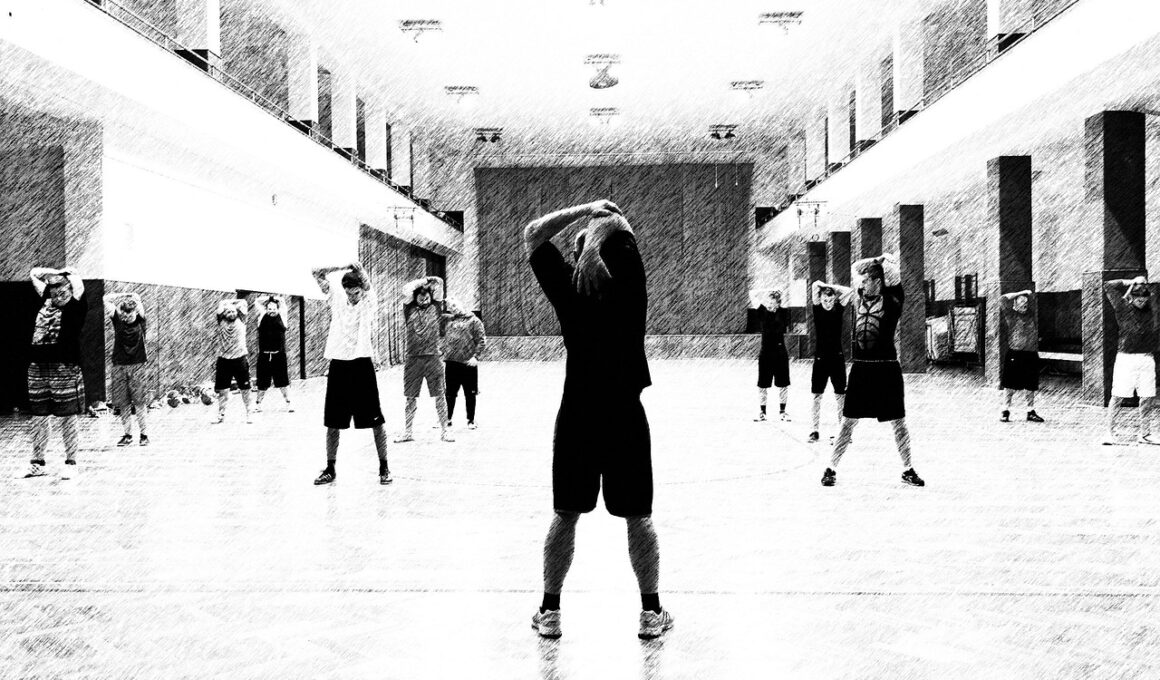Effective Warm-Up Strategies for Advanced Freerunners
Advanced freerunners often push physical limits, making an effective warm-up routine essential. A well-structured warm-up prepares the body for high-impact activities. Start with dynamic movements that increase heart rate and blood circulation. These can include exercises like jogging in place, high knees, or butt kicks. As you warm up, focus on activating the major muscle groups you’ll use during your training. This involves performing leg swings, arm circles, and torso twists to improve mobility. Each movement should progressively stretch your muscles, preventing injury and enhancing performance. Additionally, consider incorporating sport-specific drills, mimicking the movements encountered during freerunning. This not only enhances your agility but also conditions muscle memory. Remember to keep your warm-up engaging by including variations in your routine to avoid monotony. Incorporating music can also enhance motivation. This creates a positive mental attitude towards challenges ahead. Consequently, a robust warm-up can contribute greatly to maximizing your capabilities in freerunning by increasing strength, flexibility, and coordination. Adapting your warm-up as per your training intensity ensures that your body responds well to varying demands. This way, you prepare not just physically, but mentally as well.
After a successful warm-up, it’s vital to maintain focus on the cool-down process. A cool-down routine serves to gradually lower the heart rate, facilitating recovery and minimizing muscle stiffness. Start with gentle, slow movements to transition smoothly from intense activity to a resting state. Incorporate static stretches targeting major muscle groups, such as quadriceps, hamstrings, and shoulders. This aids in promoting flexibility and keeping muscles elongated. Gentle stretches should be sustained for 15 to 30 seconds each, providing maximum benefit. Pay attention to your breathing during this time, as deep, controlled breaths enhance relaxation and recovery processes. Additionally, hydration plays a crucial role in recovery. Ensure you rehydrate yourself after training to replenish lost fluids. You could also enjoy a light snack packed with protein, which supports muscle repair. Post-workout, take time to reflect on your training session. Analyze areas needing improvement, while celebrating the successes achieved. A consistent routine of cool-downs leads to long-term benefits, including improved performance and reduced injury risk. Remember that recovery is integral to sustained progress. Be intentional in your recovery efforts to enhance overall free running skills.
Key Components of Effective Warm-Ups
Focusing on key components of warm-up routines ensures that you maximally prepare your body. Firstly, always prioritize mobility exercises to enhance flexibility and joint range of motion. Consider movements like hip circles, ankle rotations, and dynamic lunges aimed at loosening up the body. These exercises also target muscle engagement essential for successful freerunning. Secondly, gradually raise your heart rate through cardiovascular activities. Engaging in activities like sprinting short distances or performing agility ladder drills helps increase blood flow to working muscles. These techniques also decrease risk factors for injury during high-impact activities. Also, include strength movement patterns that replicate freerunning fundamentals. Incorporate exercises like plyometric box jumps and explosive push-ups as they mimic the demands of freerunning. These are crucial in enhancing muscle power and explosiveness. Finally, include mental preparation techniques such as visualization to boost confidence while executing challenging movements. Consistently engaging in these warm-up components primes you for the best performance. Additional focus is crucial on balancing agility, strength, and psychological readiness as these play pivotal roles in freerunning success.
When executing warm-up routines, time management is essential for advanced freerunners. Allocate sufficient time typically ranging from 15 to 30 minutes dedicated solely to warming up. This allows adequate time to engage all vital muscle groups and prepares your body physiologically for exertion. For efficient use of this time, consider implementing a circuit-based warm-up routine combining multiple exercises targeting different muscle groups. Circuits can include a balanced mix of cardio, strength, and mobility elements which efficiently warms up your entire body. Furthermore, pay attention to individual needs when customizing your warm-up. Not every freerunner possesses the same flexibility, strength, or experience level; therefore, personalize your routine accordingly. If you’re working on specific skills, ensure the warm-up complements your focus for that session. This targeted approach raises effectiveness significantly. After your warm-up, assess your physical state to gauge readiness. Make modifications as necessary, adding or reducing exercises based on how your body responds. Ultimately, successful training hinges not only on execution but also on how well you prepare your body. Maintaining flexibility in your warm-up strategy is crucial in accommodating different training demands.
The Importance of Breath Control in Warm-Ups
Integrating breath control within your warm-up routine is a powerful strategy for enhancing performance. Breath awareness fosters an effective mind-body connection, grounding you before high-energy exertion. Begin with deep breathing exercises that synchronize inhalation and exhalation with your movements. For instance, during dynamic stretches, inhale as you extend and exhale when you compress. This technique not only helps in muscle activation but also calms your nerves. Controlled breathing optimizes oxygen intake, thereby fueling your work session. As you transition into rigorous movements, maintain breath control to regulate your energy expenditure. Becoming aware of your breath can ease anxiety and bolster focus during challenging freerunning. Practicing this throughout your warm-up significantly boosts mental clarity – an essential aspect for successful execution of complex movements. Moreover, breath control aids in sustaining stamina during long training sessions, ensuring you maintain a steady energy flow. Creating this rhythm with breath fosters overall well-being, allowing you to perform at optimal levels. Incorporating breath control is less about technicality; it’s a foundational element enhancing performance and increasing the likelihood of prolonged efforts in freerunning.
Advanced freerunners must remain aware of potential injuries and the importance of adapting warm-up routines accordingly. Preparing physically can significantly reduce the risk of injury during strenuous training sessions. Start by incorporating injury prevention drills focusing on flexibility and range of motion. Key areas such as ankles, knees, and hips should be a priority during warm-ups, ensuring stability during complex movements. Understanding personal injury history also assists in tailoring routines that focus on these regions. While developing strength is significant, balance your muscle groups to prevent imbalance-related injuries. Include multi-directional movements that replicate freerunning conditions, such as lateral lunges and diagonal skips to further enhance stability. Furthermore, the benefits of wearing proper footwear to support foot structure cannot be overemphasized. Prioritize shoes that provide adequate support tailored to your training ground conditions. Condition years of dedication towards freerunning must be complemented by effective injury prevention strategies. Always remain conscious of listening to your body, making adjustments based on signals of fatigue, soreness, or discomfort. Establishing this awareness is crucial to prolonging your freerunning journey without interruptions caused by injuries.
Conclusion: Embracing Routine for Optimal Performance
In conclusion, embracing structured warm-up and cool-down routines can transform your freerunning experience significantly. Create commitment towards consistently performing warm-ups as an integral part of your training regimen. This not only optimizes performance but promotes long-term athletic capability and reduces injury risks. By prioritizing proactive recovery, you equip your body to handle advanced techniques and maximize the training outcome effectively. Having effective warm-up strategies in place fosters a growth mindset while pursuing new freestyle skills. Additionally, establishing routine creates comfort, making every session feel purposeful and enjoyable. Fostering community discussions surrounding warm-up engagement can lead to shared insights about unique and effective warm-up practices. Collaborate with fellow athletes to explore varied strategies, creating an enriching environment among peers. The synergy developed through community learning complements individualized approaches to skill development. Ultimately, remember that developing a proficient warm-up process enhances both your physical and mental readiness. This holistic process leads to greater achievements, sustained motivation, and a continual journey into the exhilarating world of freerunning. Every advanced freerunner can benefit from a seamless transition into intense sessions by committing to structured warm-up strategies.


